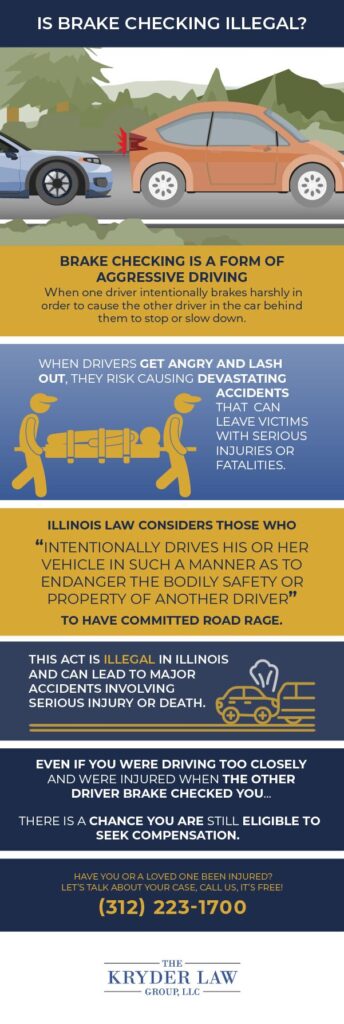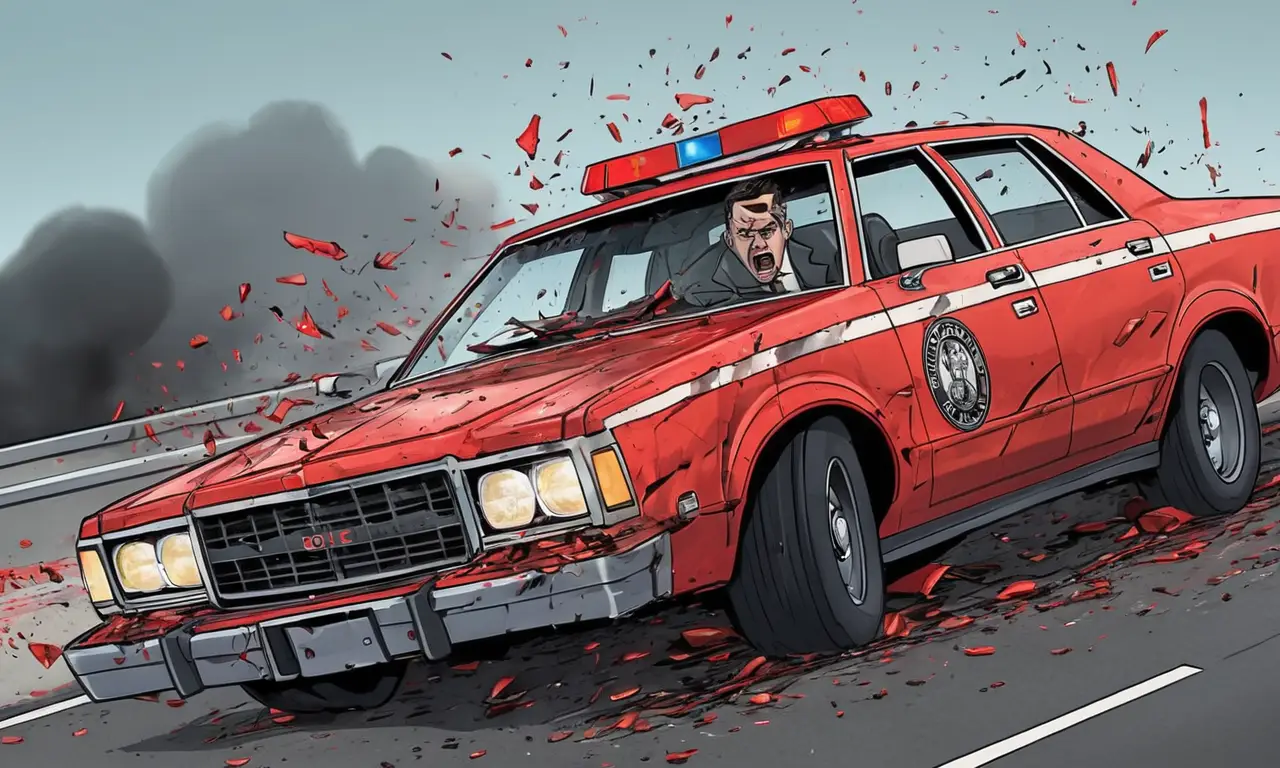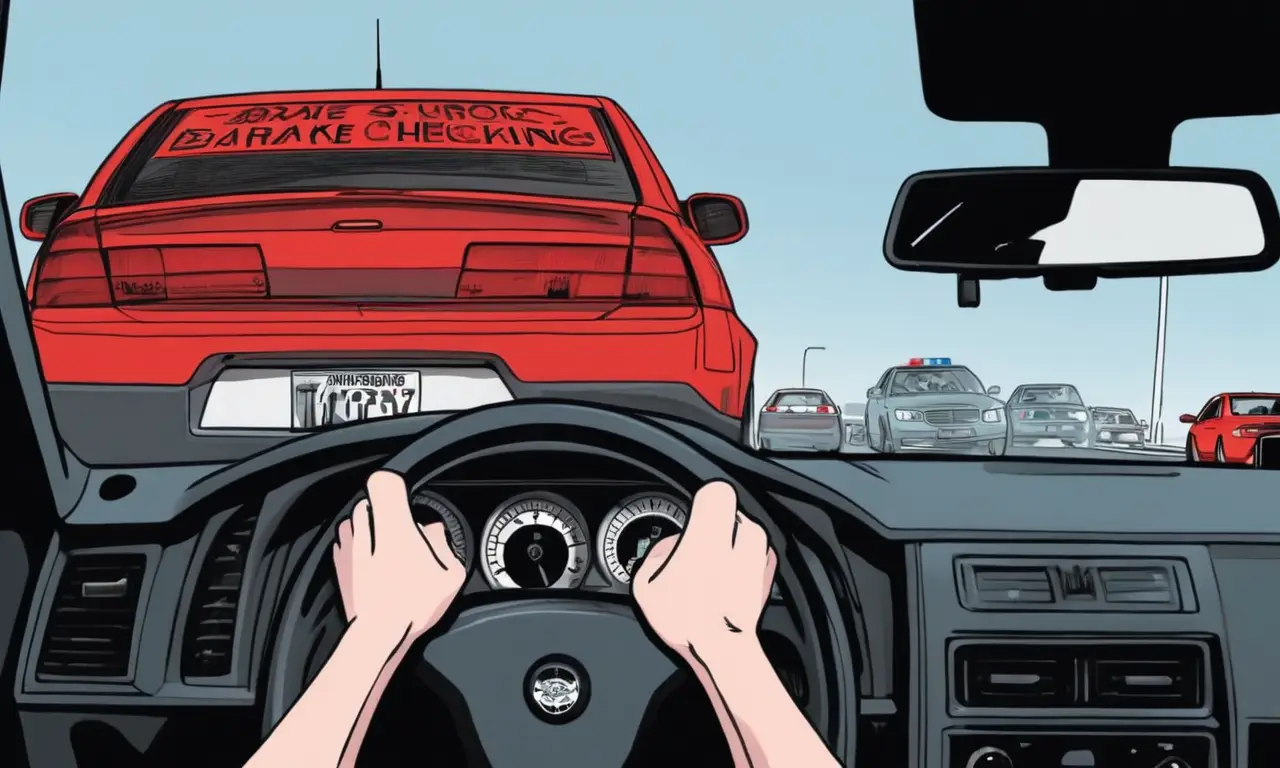
Brake checking, a dangerous driving maneuver often fueled by road rage or frustration, can have devastating consequences for all involved. This article delves into the intricacies of brake checking, exploring its inherent dangers and outlining crucial steps to take if you find yourself in such a situation. We’ll equip you with knowledge about defensive driving techniques to avoid becoming a victim and guide you through the process of reporting and documenting incidents involving brake checking.
This comprehensive guide will cover the definition of brake checking, its potential risks, effective defensive driving strategies, and essential steps for reporting and collecting evidence after an incident. By understanding these aspects, you can navigate potentially dangerous situations on the road with greater awareness and preparedness.
What is Brake Checking?
Brake checking is a reckless driving tactic where a driver suddenly and abruptly slams on their brakes without adequate warning to the vehicle behind them. This maneuver forces the trailing vehicle to brake sharply, often leading to a near-collision or actual accident.
The intent behind brake checking can vary from expressing anger or frustration to attempting to intimidate or punish another driver for perceived transgressions on the road. However, regardless of the motivation, brake checking is an extremely dangerous and irresponsible act that puts everyone involved at risk.
Brake checking often occurs in situations where drivers feel provoked or threatened by other motorists. For example, a driver might engage in brake checking if they believe another vehicle is tailgating them, driving too slowly, or changing lanes improperly.
Dangers of Brake Checking

The consequences of brake checking can be severe and far-reaching, impacting both physical safety and legal ramifications. A sudden stop triggered by brake checking can lead to a chain reaction of collisions, potentially injuring passengers, pedestrians, and even the driver who initiated the maneuver.
Beyond the immediate risk of accidents, brake checking can also contribute to road rage incidents, escalating tensions and creating hostile driving environments. The psychological stress associated with such encounters can have long-term effects on drivers’ well-being and overall safety.
Legally, brake checking is considered a reckless driving offense in most jurisdictions. Drivers who engage in this behavior can face fines, license suspension, or even jail time depending on the severity of the incident and any resulting injuries.
Defensive Driving Techniques
While it’s crucial to be aware of the dangers of brake checking, proactive defensive driving techniques can significantly reduce your risk of becoming a victim. Maintaining a safe following distance is paramount, allowing ample reaction time if the vehicle ahead suddenly brakes.
Always anticipate potential hazards and adjust your speed accordingly. Avoid tailgating other vehicles and maintain a calm and courteous demeanor on the road. If you feel threatened by another driver’s behavior, try to de-escalate the situation by avoiding eye contact and remaining focused on driving safely.
Recognizing Aggressive Drivers
Be vigilant in identifying aggressive drivers who may be more likely to engage in brake checking. Look for signs such as tailgating, speeding, weaving through traffic, or making angry gestures. If you encounter an aggressive driver, maintain a safe distance and avoid engaging with them directly.
Reporting Brake Checking Incidents

If you experience brake checking, it’s essential to report the incident to the appropriate authorities. Contact your local police department or highway patrol to file a report detailing the event, including the date, time, location, and description of the other vehicle involved.
Provide as much information as possible, such as license plate number, make and model of the vehicle, and any identifying features. Reporting brake checking incidents helps law enforcement track patterns and take action against reckless drivers.
Evidence Collection After a Brake Check
Gathering evidence after a brake checking incident can be crucial for supporting your case if legal action is necessary. If it’s safe to do so, try to capture photos or videos of the other vehicle involved, including their license plate number.
If there are any witnesses to the incident, obtain their contact information as they may provide valuable testimony. Keep a detailed record of the event in your own words, noting the sequence of events, the driver’s behavior, and any damage sustained to your vehicle.
Conclusion
Brake checking is a dangerous and irresponsible driving maneuver that can have severe consequences for all parties involved. By understanding its risks, practicing defensive driving techniques, and reporting incidents promptly, you can contribute to safer roads and protect yourself from becoming a victim of this reckless act. Remember, prioritize safety above all else and avoid engaging in any retaliatory actions that could escalate the situation further.
